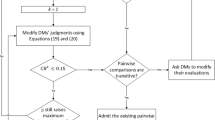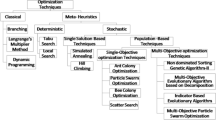Abstract
This study presents a factorial two-stage stochastic programming (FTSP) approach for supporting water resource management under uncertainty. FTSP is developed through the integration of factorial analysis and two-stage stochastic programming (TSP) methods into a general modeling framework. It can handle uncertainties expressed as probability distributions and interval numbers. This approach has two advantages in comparison to conventional inexact TSP methods. Firstly, FTSP inherits merits of conventional inexact two-stage optimization approaches. Secondly, it can provide detailed effects of uncertain parameters and their interactions on the system performance. The developed FTSP method is applied to a hypothetical case study of water resources systems analysis. The results indicate that significant factors and their interactions can be identified. They can be further analyzed for generating water allocation decision alternatives in municipal, industrial and agricultural sectors. Reasonable water allocation schemes can thus be formulated based on the resulting information of detailed effects from various impact factors and their interactions. Consequently, maximized net system benefit can be achieved.










Similar content being viewed by others
Notes
NB is the abbreviation of net benefit. For example, Municipal NB represents municipal net benefit.
R is the abbreviation of reduction. For example, Industrial R represents industrial demand reduction.
References
Birge JR, Louveaux FV (1988) A multicut algorithm for two-stage stochastic linear programs. Eur J Oper Res 34:384–392
Box GEP, Hunter WG, Hunter JS (1978) Statistics for experimenters. Wiley, New York
Huang GH (1998) A hybrid inexact-stochastic water management model. Eur J Oper Res 107:137–158
Huang GH, Loucks DP (2000) An inexact two-stage stochastic programming model for water resources management under uncertainty. Civ Eng Environ Syst 17:95–118
Li YP, Huang GH (2008) Interval-parameter two-stage stochastic nonlinear programming for water resources management under uncertainty. Water Resour Manag 22:681–698
Li YP, Huang GH, Nie XH, Nie SL (2008) A two-stage fuzzy robust integer programming approach for capacity planning of environmental management systems. Eur J Oper Res 189:399–420
Li YP, Huang GH, Chen X (2009) Multistage scenario-based interval-stochastic programming for planning water resources allocation. Stoch Environ Res Risk Assess 23:781–792
Lin QS, Huang GH, Bass B, Qin XS (2009) IFTEM: an interval-fuzzy two-stage stochastic optimization model for regional energy systems planning under uncertainty. Energy Policy 37:868–878
Loucks DP, Stedinger JR, Haith DA (1981) Water resource systems planning and analysis. Prentice Hall, Englewood Cliffs
Lu HW, Huang GH, Zeng GM, Maqsood I, He L (2008) An inexact two-stage fuzzy-stochastic programming model for water resources management. Water Resour Manag 22:991–1016
Lu HW, Huang GH, He L (2009) A semi-infinite analysis-based inexact two-stage stochastic fuzzy linear programming approach for water resources management. Eng Optim 41:73–85
Maqsood I, Huang GH, Huang YF, Chen B (2005) ITOM: an interval-parameter two-stage optimization model for stochastic planning of water resources systems. Stoch Environ Res Risk Assess 19:125–133
Montgomery DC (2001) Design and analysis of experiments, 5 edn. Wiley, New York
Montgomery DC, Runger GC (2003) Applied statistics and probability for engineers, 3rd edn. Wiley, New York
Pereira MVF, Pinto LMVG (1985) Stochastic optimization of a multireservoir hydroelectric system—a decomposition approach. Water Resour Res 21:779–792
Qin XS, Huang GH, Chakma A (2008) Modeling groundwater contamination under uncertainty: a factorial-design-based stochastic approach. J Environ Inform 11:11–20
Ruszczynski A (1993) Parallel decomposition of multistage stochastic programming problems. Math Program 58:201–228
Wang D, Adams BJ (1986) Optimization of real-time reservoir operations with Markov decision processes. Water Resour Res 22:345–352
Acknowledgements
This research was supported by the Major State Basic Research Development Program of MOST (2006CB403307 and 2005CB724200), the Canadian Water Network under the Networks of Centers of Excellence (NCE), the Natural Science and Engineering Research Council of Canada, the Special Research Grant for University Doctoral Programs (20070027029) and Beijing Municipal Commission of Education.
Author information
Authors and Affiliations
Corresponding author
Rights and permissions
About this article
Cite this article
Zhou, Y., Huang, G.H. Factorial two-stage stochastic programming for water resources management. Stoch Environ Res Risk Assess 25, 67–78 (2011). https://doi.org/10.1007/s00477-010-0409-9
Published:
Issue Date:
DOI: https://doi.org/10.1007/s00477-010-0409-9




